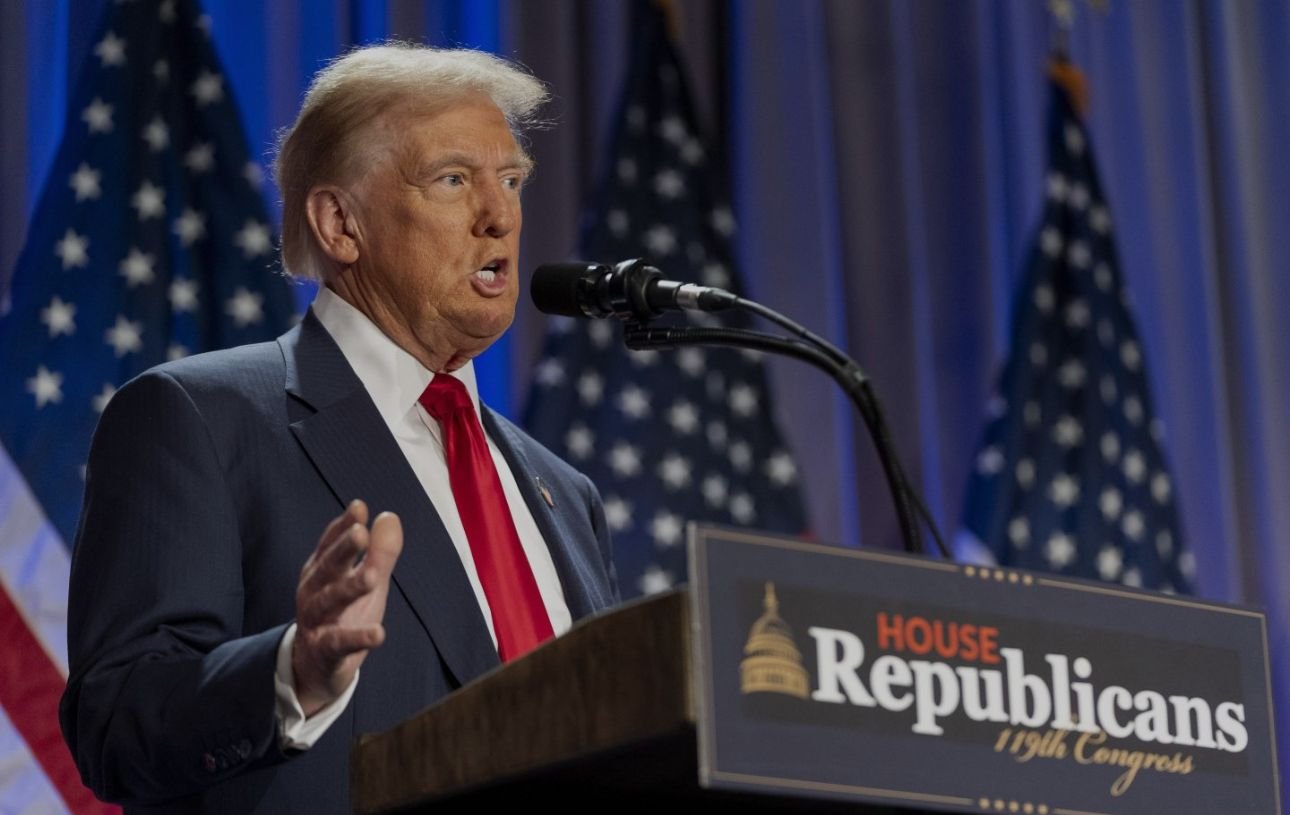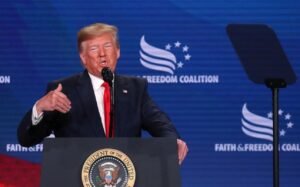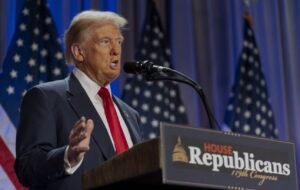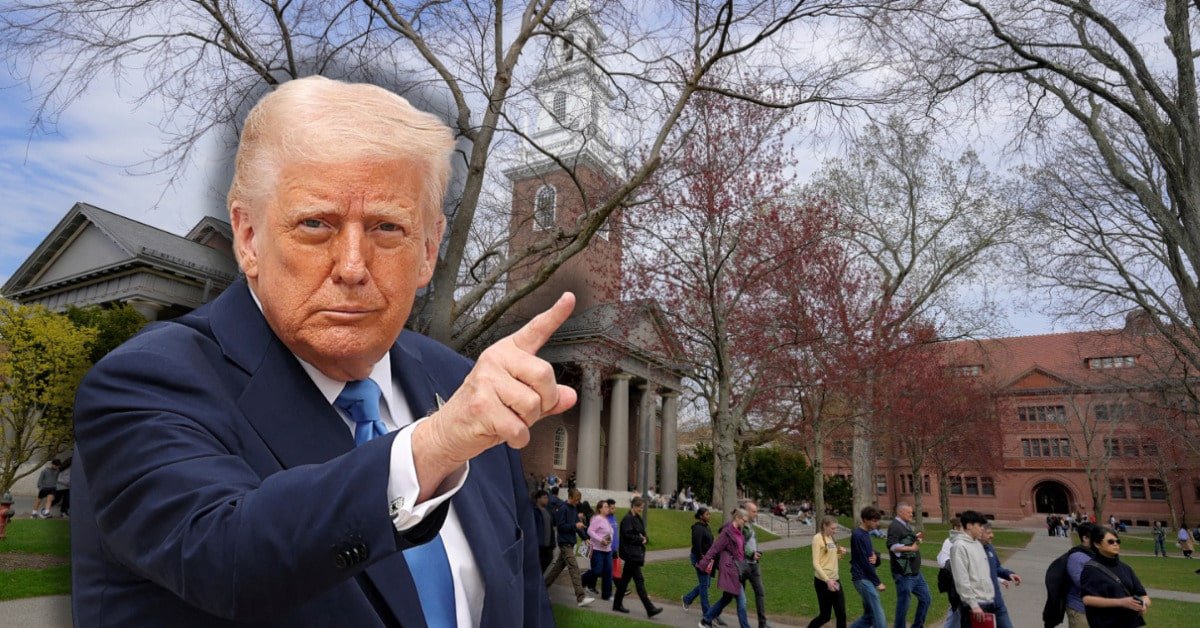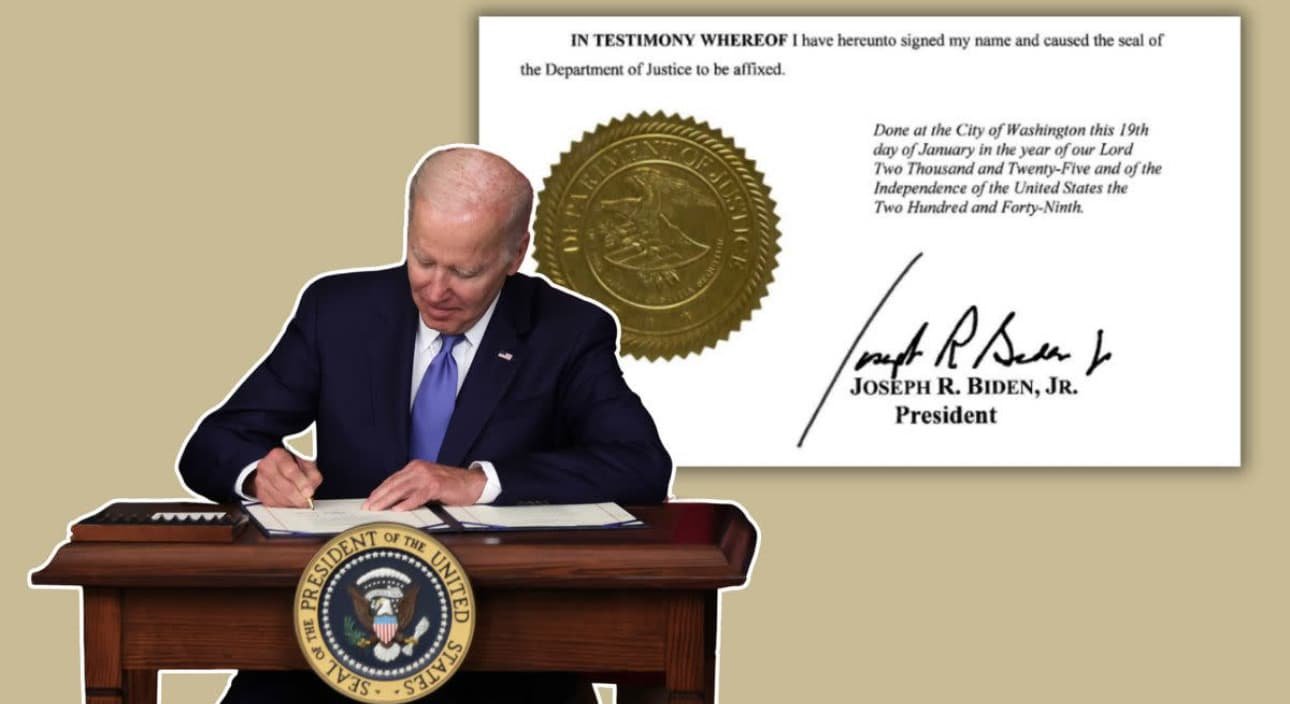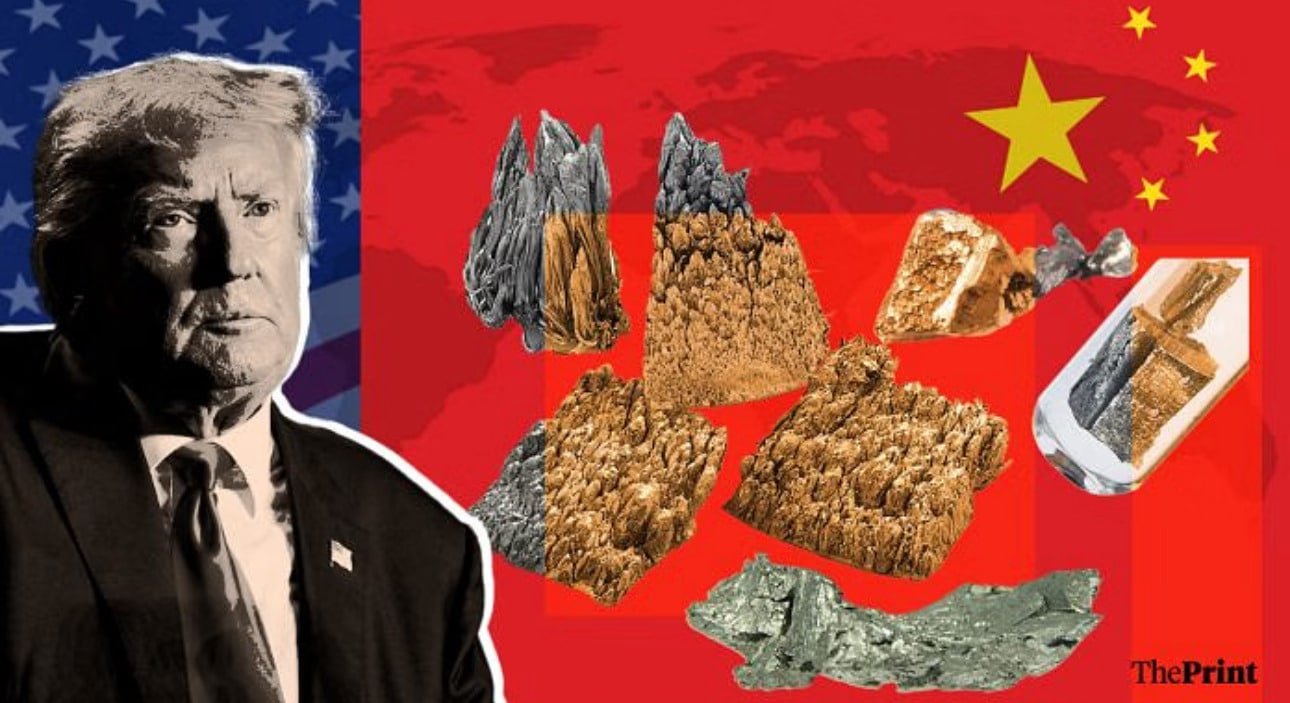BREAKING: Trump: ‘I Know What I’m Doing on Tariffs’ 4/9/25
President Donald Trump told Republicans on Tuesday that his tariffs led to $7 trillion in new US investment and asserted “I know what the hell I’m doing.”
During the Republican Congressional Committee dinner Trump made his statements which Newsmax2 broadcast live.
Companies are establishing new plants throughout our nation.
Trump explained that developers are flocking to locations while older facilities face demolition to make way for new construction. Mexico has halted the development of four or five new plants. They’re all coming into the United States.
Hours before this statement he revealed that 70 countries sought to modify trade agreements with the administration by crafting “highly tailored” deals.
Japan has sent representatives to fly here for negotiations. South Korea has organized a flight to this location with the purpose of establishing a trade deal.
Numerous countries are approaching us. They want to make deals. Those countries would have laughed at us if we suggested making these deals two or three or five years ago.
At the White House he reported that numerous countries are now registering their intent to form agreements.
Overview of Trump’s Tariff Policy
President Trump’s tariff policy has changed how the U.S. deals with international trade. It aims to boost American manufacturing and protect local industries. Tariffs are placed on countries with trade agreements that lead to deficits.
The goal is to make sure American interests are protected. This is in a world where trade is often unfair.
Introduction to Trump’s Tariffs
Trump tariffs are a big change in trade. They target specific countries with tariffs to fix past imbalances. This policy encourages fair competition.
It focuses on countries that have gotten the better deal from trade agreements. This changes the way international trade works.
Current Tariff Rates
It’s important to know the current tariff rates. This helps us understand the policy’s impact on the economy. Here are some tariffs imposed by the Trump administration:
| Country | Tariff Rate (%) | Primary Products Affected |
|---|---|---|
| China | 25% | Steel, aluminum, electronics |
| Canada | 10% | Lumber, dairy products |
| Mexico | 20% | Automobiles, agricultural products |
| European Union | 15% | Aircraft, whiskey, textiles |
These tariffs show the administration’s focus on American jobs and industries. Knowing this helps us see how trade might change because of these decisions.
Trump: I Know. What The Hell Im Doing On Tariffs!
Trump’s firm stance on tariffs has sparked strong reactions from world leaders. Many are now trying to understand his trade strategy. As countries face high tariffs, they’re rushing to Washington for urgent talks.
These talks aim to ease the economic strain. The world of international relations is changing. Countries are working hard to get better trade deals, showing the big impact of these tariffs.
Reactions from Global Leaders
Countries like South Korea and Japan are taking a proactive stance. They want to keep good trade relations with the U.S. despite the tariffs. South Korea is supporting its car industry with financial help.
Japan is ready to work with the U.S. on trade. It’s using its strong economy to help in these talks.
| Country | Trade Negotiation Actions | Sector Impacted |
|---|---|---|
| South Korea | Financial measures for negotiation | Automotive industry |
| Japan | Collaboration on trade terms | Various industries |
| Germany | Seeking direct dialogue with U.S. | Manufacturing |
| Mexico | Engaged in ongoing discussions | Agriculture and manufacturing |
Countries are adjusting to the new tariffs, showing both challenges and chances. How they lead in these times will be key.
Economic Ramifications of Trump’s Tariff Strategy
Trump’s tariff strategy has brought big changes to the U.S. economy. It’s important to understand how these changes affect U.S. growth. Experts worry that the trade deficit might get worse because of higher costs and trade uncertainty.
Impact on U.S. Economic Growth
The tariffs have shaken up the U.S. economy, causing stock market ups and downs. With prices going up, people spend less, slowing down the economy. Businesses pay more, leading to less investment and jobs lost.
The S&P 500 has seen big drops, showing investors’ worries about the future. They’re unsure about the economy with these tariffs around.
Retaliatory Measures by Affected Countries
Many countries have hit back with their own tariffs, making things worse globally. This back-and-forth hurts the U.S. and strains relationships with other countries. It makes it hard for American goods to stay competitive overseas.
This could cause long-term problems for U.S. industries that rely on foreign markets. It’s a big challenge for them to grow and succeed.
Conclusion
President Trump’s stance on tariffs is changing U.S. policy direction. The impact goes beyond just money; it shows a new way of doing trade that reflects American strength and freedom. This approach aims to protect American jobs and interests, showing our nation’s drive for economic freedom.
As the world reacts, the balance of power in trade could change a lot. Countries must figure out how to deal with this new era. Businesses and leaders are adjusting to these changes, making sure American workers are at the heart of every decision.
These policies might change how America is seen globally, showing confidence and control. President Trump’s path could change international trade, making us stand together. We must keep our values and be strong against global challenges.
FAQ
What are the main objectives of Trump’s tariff policy?
Trump’s tariff policy aims to protect American jobs and industries. It also seeks to punish countries with trade deficits. The goal is to control international trade and protect U.S. economic interests.
How have global leaders reacted to the new tariffs?
Global leaders have shown different reactions. Over 70 countries want to talk to reduce tariff impacts. South Korea and Japan are open to negotiations for better trade deals.
What economic impact do analysts predict from these tariffs?
Experts fear the tariffs could harm global supply chains. They also worry about higher prices for consumers. This could lead to a recession, hurting U.S. growth and relations with other countries.
How do the new tariff rates affect U.S. allies?
The new tariffs put a big financial strain on U.S. allies. They must negotiate to lessen the economic damage. This is because import taxes on Chinese goods and others have gone up.
What traditional American values does Trump’s tariff strategy reflect?
Trump’s tariff policy shows American values like independence and strength. It protects American interests and supports strong nationalism in trade.

